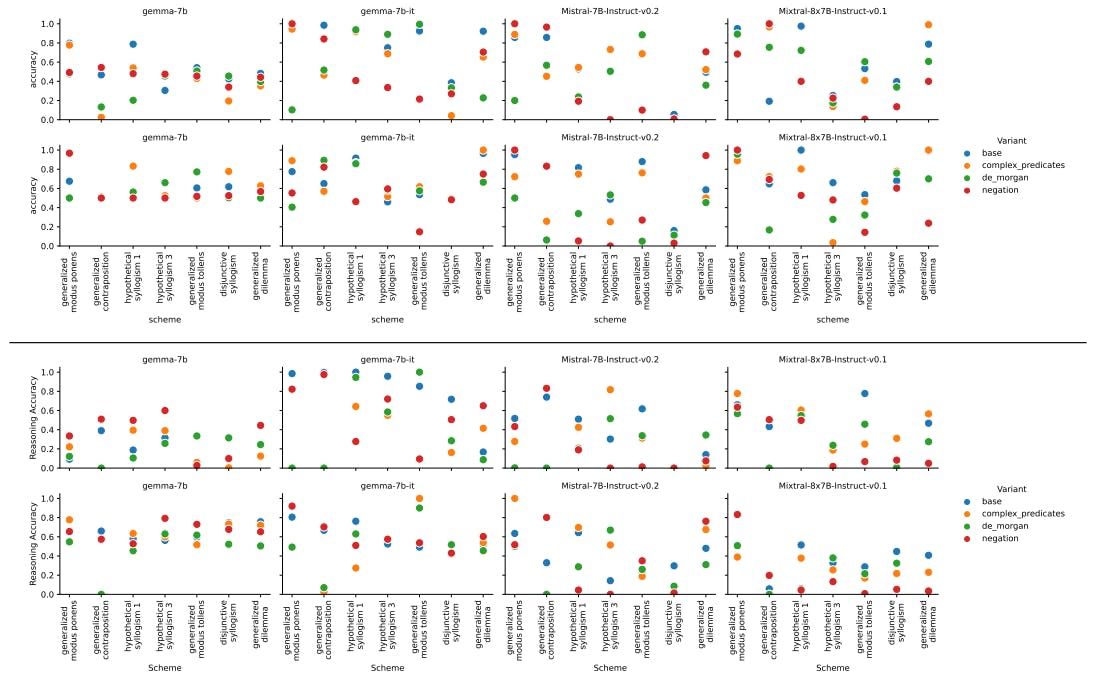Table of Links
- Abstract and Introduction
- SylloBio-NLI
- Empirical Evaluation
- Related Work
- Conclusions
- Limitations and References
A. Formalization of the SylloBio-NLI Resource Generation Process
B. Formalization of Tasks 1 and 2
C. Dictionary of gene and pathway membership
D. Domain-specific pipeline for creating NL instances and E Accessing LLMs
H. Prompting LLMs - Zero-shot prompts
I. Prompting LLMs - Few-shot prompts
J. Results: Misaligned Instruction-Response
K. Results: Ambiguous Impact of Distractors on Reasoning
L. Results: Models Prioritize Contextual Knowledge Over Background Knowledge
M Supplementary Figures and N Supplementary Tables
5 Conclusions
In this work, we proposed a novel methodological framework, SylloBio-NLI, designed to evaluate the syllogistic reasoning capabilities of state-of-the-art LLMs within the biomedical domain. Through comprehensive analysis across 28 syllogistic schemes, we assessed the performance of eight different models under varying conditions, including zero-shot and few-shot settings. Our results show that both techniques exhibit high sensitivity to superficial lexical variations, highlighting a dependency between reliability, models’ architecture, and pre-training regime. Overall, our evaluation indicates that, while few-shot strategies have the potential to elicit syllogistic reasoning in LLMs, existing models are still far from achieving the robustness and consistency required for safe biomedical NLI applications.
Authors:
(1) Magdalena Wysocka, National Biomarker Centre, CRUK-MI, Univ. of Manchester, United Kingdom;
(2) Danilo S. Carvalho, National Biomarker Centre, CRUK-MI, Univ. of Manchester, United Kingdom and Department of Computer Science, Univ. of Manchester, United Kingdom;
(3) Oskar Wysocki, National Biomarker Centre, CRUK-MI, Univ. of Manchester, United Kingdom and ited Kingdom 3 I;
(4) Marco Valentino, Idiap Research Institute, Switzerland;
(5) André Freitas, National Biomarker Centre, CRUK-MI, Univ. of Manchester, United Kingdom, Department of Computer Science, Univ. of Manchester, United Kingdom and Idiap Research Institute, Switzerland.
This paper is available on arxiv under CC BY-NC-SA 4.0 license.

